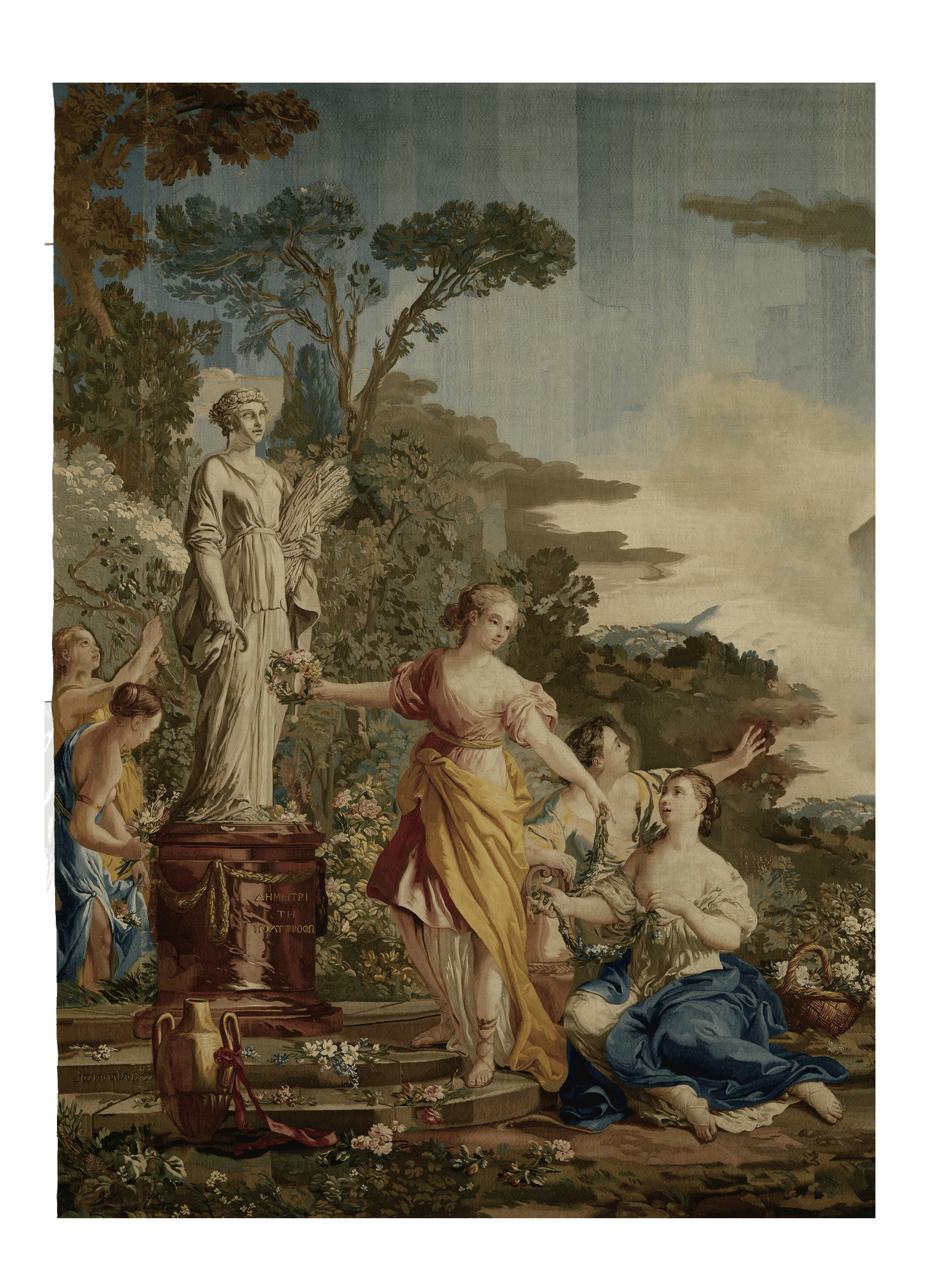Romantic English
The Offering RE401140
The Offering RE401140
Couldn't load pickup availability
This tapestry is a poetic celebration of classical mythology, a scene filled with symbolism and reverence for the ancient deities of nature and the harvest. The composition invites us into a sacred ritual, an offering to the gods who govern the cycles of life and growth.
Title: "The Offering"
Central Scene: At the center of this scene stands a commanding statue of Demeter, the Greek goddess of the harvest and fertility. She is depicted in classical form, draped in robes that flow with a natural grace, holding a sheaf of wheat in her hand—a symbol of the earth’s bounty. The statue's serene and dignified expression reflects the goddess’s role as the nurturer of mankind, ensuring the growth of crops and the sustenance of life.
Before the statue, a group of maidens gathers, engaged in the act of making an offering. They are dressed in flowing garments, their attire reflecting the soft, natural colors of the earth—pinks, yellows, and blues. The central figure, adorned in a soft rose-colored dress with a golden sash, is the focal point of the group. She holds a garland of flowers, which she appears to be placing either on the statue or offering it to Demeter, as a symbol of gratitude and reverence.
Surrounding Elements: The background is rich with lush greenery and towering trees, which create a natural canopy over the scene. The foliage is depicted in a range of greens, from deep emerald to soft olive, giving the tapestry a sense of depth and tranquility. The trees, with their sturdy trunks and delicate leaves, frame the scene beautifully, adding to the sense of a sacred grove—a place set apart from the everyday world, where nature and divinity intersect.
To the left of the statue, another maiden approaches with more flowers, her head bowed in a gesture of humility. Her companion, slightly behind her, holds a small vessel, possibly containing a libation to be poured as part of the ritual. The careful placement of these figures and their actions creates a sense of movement and continuity, as if the viewer has arrived just as the ceremony is unfolding.
Symbolism: The presence of Demeter, surrounded by offerings and attentive figures, emphasizes themes of fertility, growth, and the cycles of nature. The wheat in the goddess's hand symbolizes not only the harvest but also the sustenance that it provides—both in the literal sense of food and in the broader sense of life's continuity.
The flowers and garlands, symbols of beauty and the fleeting nature of life, remind us of the transient nature of the seasons, where each year brings forth new life, only for it to fade and be reborn again. The careful attention to the details of the flowers, from their buds to their full bloom, reflects the tapestry’s broader theme of the delicate balance between life and death, growth and decay.
Craftsmanship: The tapestry is rendered with exquisite skill, particularly in the depiction of the flowing garments and the natural elements. The play of light and shadow on the folds of the fabric and the textures of the trees adds a sense of realism and depth. The colors, while soft and muted, are rich and warm, enhancing the sense of harmony between the figures and their surroundings.
The use of perspective is subtle but effective, drawing the viewer’s eye from the foreground figures up to the statue of Demeter, and then into the lush background, which suggests an expansive, almost timeless landscape beyond the immediate scene.
Narrative and Atmosphere: This tapestry captures a moment of serene devotion, a ritual that connects the human world with the divine. It speaks to the importance of tradition, reverence, and the recognition of forces greater than oneself—forces that govern the natural world and ensure the survival of mankind.
The scene is both intimate and grand, a reflection of the Rococo period's fascination with classical mythology and the idyllic representation of pastoral life. It would have been a piece designed not only to decorate a grand space but also to evoke a sense of connection to the ancient past, reminding viewers of the timeless bonds between humanity, nature, and the gods.
In every thread, this tapestry weaves together the themes of nature, reverence, and the eternal cycles that sustain life, offering a glimpse into a world where the divine and the earthly exist in perfect harmony.
RE401140


